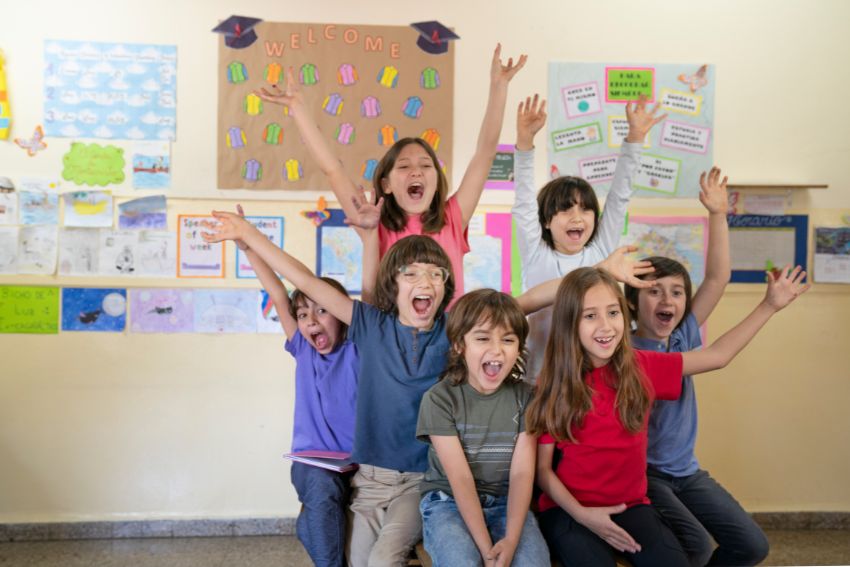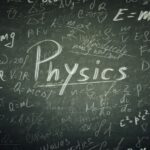The 11 Plus exam is a significant milestone for many children in the UK seeking admission to grammar schools. One of the most commonly asked questions by parents is: What is the highest 11 plus score a child can achieve? The exam uses standardised scores to ensure fairness, adjusting results based on the student’s age. This means younger students’ scores may be boosted to account for developmental differences
Understanding the 11 Plus Exam Structure
The 11 Plus exam typically assesses four key areas: English, mathematics, verbal reasoning, and non-verbal reasoning, though the exact combination varies by region. Most tests are multiple-choice and completed on answer sheets that are computer-scanned. English sections evaluate comprehension, grammar, and vocabulary, while mathematics covers the primary curriculum with more challenging applications. Verbal reasoning tests assess language-based problem-solving abilities through word relationships, code deciphering, and logical deductions. Non-verbal reasoning examines pattern recognition and spatial awareness using diagrams and pictures. Each region follows slightly different formats, so it’s essential to research the specific structure used by your local authority or target schools.
What is a Standardised Score?

Examiners use a standardised score to ensure fairness in exams like the 11 Plus, adjusting for the varying ages of students within the same school year. The score takes into account two main factors: the student’s raw score (the number of correct answers) and their age.
Younger students often face disadvantages in vocabulary, reasoning, and cognitive development compared to older peers. Standardisation adjusts raw scores to ensure fair comparisons among all age groups.
For example, a child who scores 75/80 in the raw score might receive a higher standardised score than another child with the same raw score, simply because they are younger. This process prevents age differences from skewing results, ensuring a more reliable and equitable comparison among students.
What Is the Highest 11 Plus Score for Grammar School?
The highest achievable 11 plus score in most 11 Plus exams is around 141 or 142, while the lowest is typically around 69 or 70. This scoring method makes it easier to compare a wide range of abilities and ensures that all children compete on equal footing.
The score needed for grammar school admission varies significantly between schools and regions. Most selective grammar schools set their own threshold based on available places and the performance of the applicant pool that year. In highly competitive areas, students may need scores of 130+ to secure a place, while in less competitive regions, scores around 120-125 might be sufficient. Some super-selective grammar schools may require scores of 135 or higher. It’s worth noting that many schools don’t simply rank by score but may consider other factors like proximity to the school. For specific information, check the admission criteria for your target schools, as these thresholds can change year to year based on the number and quality of applications.
What is the Purpose of Standardisation?
The purpose of standardisation in the 11 Plus exam is to ensure fairness for all students. It creates a level playing field by adjusting scores based on age. Older children, born earlier in the academic year, often have an advantage in areas like cognitive development, vocabulary, and problem-solving.
This system balances those differences, so younger students aren’t at a disadvantage when compared to their older peers. To address this, standardisation adjusts the raw scores by considering the child’s exact age at the time of the exam.
By factoring in age, the system ensures that children of all ages can be fairly compared. Without standardisation, older children would have an inherent advantage, potentially skewing results. This process removes the bias, giving younger children an equal chance to perform well, and makes the scores more reflective of their true abilities.
Standardisation also adjusts for variations in test difficulty across different years, further ensuring consistency and fairness in the scoring process.
Standardised Age Scores (SAS)
The Standardised Age Score (SAS) is a key component in the 11 Plus exam scoring process. It ensures that the scores are adjusted based on a child’s age at the time of the exam. Since there can be almost a year’s difference between the oldest and youngest students taking the test, the SAS compensates for the developmental advantages that older students may have. This adjustment ensures that younger students aren’t at a disadvantage simply because of their age.
How the 11 Plus Exam Is Marked in 2025
The 2025 11 Plus marking process continues to use standardisation but with some notable refinements. Most regions now employ computer-based scoring for multiple-choice sections, reducing human error. Raw scores are converted to standardised scores using statistical models that consider the child’s exact age in years and months on the test date.
For 2025, many areas have implemented more sophisticated age-standardisation algorithms that provide finer adjustments for developmental differences. 11 plus English writing sections, where included, are typically human-marked using detailed rubrics focusing on composition, grammar, vocabulary and punctuation. Parents should note that marking procedures are strictly confidential, with multiple quality checks to ensure accuracy. Schools typically release results in October, though regions vary in timing, presenting standardised scores alongside the minimum qualifying score for target schools.
The Impact of Age on 11 Plus Scores
Age plays a significant role in the 11 Plus scoring system, primarily due to the process of age standardisation. In every school year, there can be almost a full year’s age difference between the oldest and youngest children taking the exam. Since children’s cognitive abilities, vocabulary, and reasoning skills develop rapidly during this period, older students tend to have an advantage.
To ensure fairness, the Standardised Age Score (SAS) adjusts the raw scores to account for these developmental differences. Younger students may receive a slight boost in their scores to balance out the advantages that older students typically have. For instance, if two students achieve the same raw score, the younger child is likely to receive a slightly higher SAS than their older peer.

This adjustment is crucial because age differences can greatly affect skills like verbal reasoning and vocabulary. Younger students often haven’t had as much exposure to complex language as their older counterparts.
As a result, their cognitive abilities may not be as developed. The standardisation process ensures fair assessment by adjusting scores so younger students aren’t disadvantaged compared to older ones.
However, it’s important to clarify that age standardisation doesn’t penalise older children by reducing their scores; it simply ensures that younger students are not at a disadvantage. This creates a more accurate reflection of each child’s ability relative to their age group.
Standardising scores based on age allows schools to assess all students fairly, regardless of their birth date within the academic year.
Preparing Your Child to Achieve a Top 11+ Score
Effective preparation for achieving top 11 Plus scores requires a balanced, strategic approach. Start with a diagnostic assessment to identify strengths and weaknesses across all test components. Create a structured study plan beginning months before the exam, with regular practice sessions of 20-30 minutes for younger children, gradually increasing as the test approaches. Focus on building fundamental skills first before introducing practice tests. Incorporate timed practice to develop exam techniques and time management. Use high-quality resources that match your region’s specific exam format.
Beyond academic preparation, ensure your child gets adequate sleep, regular physical activity, and proper nutrition. Manage exam anxiety by teaching relaxation techniques and maintaining a positive attitude about the process. Remember that over preparation can be counterproductive, balance work with play and maintain a supportive environment that doesn’t place excessive pressure on your child. Regular mock tests in exam-like conditions will build confidence and familiarity with the test format.
What Happens If Your Child Scores Lower Than Expected?
If your child receives a lower 11 Plus score than anticipated, remember that this isn’t a reflection of their overall intelligence or future potential. First, carefully review their results to understand which areas affected their performance. Many areas offer an appeals process if you believe there were extenuating circumstances or administrative errors, though success rates vary significantly.
If your child narrowly missed the qualifying score, some schools offer waiting list places that may become available later. Consider alternative educational paths, including high-performing non-selective schools that might better suit your child’s learning style. Some parents opt for retaking the exam the following year after additional preparation, though this means delaying school entry. Most importantly, support your child emotionally during this time by emphasising their strengths and achievements in other areas. Remember that many successful individuals didn’t attend grammar schools, and there are multiple pathways to academic and career success.
Conclusion
Understanding the 11 Plus scoring system is crucial for parents navigating this important educational milestone. The standardisation process ensures fairness by accounting for age differences, creating a level playing field where children’s true abilities can shine through. While achieving a high score is important, remember that the 11 Plus is just one step in your child’s educational journey.
Grammar schools offer excellent opportunities, but they aren’t the only path to academic success. Many children thrive in different educational environments that better suit their individual learning styles and interests. The most important factor is finding a school where your child will be happy, motivated, and able to reach their full potential. Need expert guidance? Our online tutoring platform connects you with experienced 11 Plus tutors who understand the exam inside out. Whether you need comprehensive preparation or targeted help, our tutors can provide personalised support to maximise your child’s potential.
FAQs:
What is the pass mark for the 11 Plus?
The pass mark differs depending on the school or consortium. In some regions, schools set a pass mark around 121, but it varies widely depending on the local education authority.
What is a good score for the 11 Plus?
A good score varies by school and region, but generally, a score of 120 or above is considered competitive for grammar schools. However, each school may have different cut-offs.
What is the highest 11 plus score?
There is no single national maximum for the 11 Plus exam because each region uses its own standardised scoring system. That said, many test providers suggest that typical highest scores hover around 141 or 142 on standardised scales.
What is the highest 11 Plus score in Birmingham?
In the Birmingham/West Midlands region, the test is age-standardised around a median of 200. Some forum reports suggest exceptionally high scores of 245-280+ have been achieved.
What is the Buckinghamshire 11 Plus highest score?
In the Buckinghamshire area, the standardised qualifying score for grammar schools is 121 or above. While the highest 11 Plus score in Buckinghamshire is not officially published, some online parent forums suggest that scores in the region of 170+ may have been achieved.
Is age taken into account when calculating the score?
The 11 Plus adjusts scores using Standardised Age Scores (SAS) to account for the child’s age, ensuring fairness and preventing disadvantages for younger students.
Does a high score guarantee a place in a grammar school?
Not necessarily. While a high score improves your child’s chances, schools also consider other factors, such as catchment area and available places. Find out best grammar schools in UK for 11 plus.








